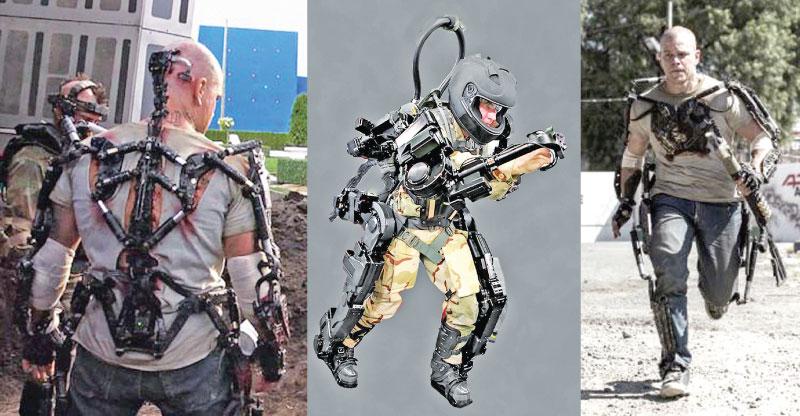
Imagine a world in which you had superhuman like strength and agility. Making everything around you feel light-weight and powerless. Advancements in technology moreover, in the avenue of cybernetics have made it possible for imagination to become a reality. You may have seen blockbusters like Terminator, Robocop, Iron Man and even Elysium.
 The one thing these movies have in common apart from mass hysteria and end of world themes are that the movies make use of futuristic robotic technology. The best example of cybernetics at work in Hollywood is in the movie Elysium staring Matt Damon, focusing on the metallic exoskeleton suit that Matt Damon’s character has on his body enabling him to walk and giving him more power than he had before.
The one thing these movies have in common apart from mass hysteria and end of world themes are that the movies make use of futuristic robotic technology. The best example of cybernetics at work in Hollywood is in the movie Elysium staring Matt Damon, focusing on the metallic exoskeleton suit that Matt Damon’s character has on his body enabling him to walk and giving him more power than he had before.
An exoskeleton is an external skeleton that supports and protects the body in which the exoskeleton is enclosing. Think of it as the opposite of the bones in your body keeping you stable and upright from the inside. The exoskeleton also called a ‘shell’ is made from rigid materials such as metal or carbon fiber. The entire structure comprises sensors, actuators, pneumatics and hydraulic components giving the host maximum flexibility, movement and stability. The first known prototype for the exoskeleton was built in 1890 by a Russian named Nicholas Yagin. Since then many people have tried and some failed to create a fully functioning exoskeleton suit. With the advancement and knowledge in the field of cybernetics, people have studied and found ways of using cybernetics to power the exoskeleton suit. This involves the combination of man and machine, border lining on the field of robotics.
This new and adaptive use of cybernetics integrated with robotics is a new chapter for many industries.
Two of the biggest users of this technology are the medical industry and the military. The medical industry makes use of the exoskeleton for people with disabilities and loss of limbs. The suit enables the body to perform routine functions such as walking or even the simple function of making a fist. The exoskeleton is also used in assisting people with rehabilitation after a major traumatic incident that resulted in decrease of the human motor functions, as well as assisting the patients. This technology is also being developed to assist surgeons in enhancing the precision during surgery, in addition, they help nurses to carry and move heavy patients preventing the nurses turning into patients themselves.
The military makes use of the exoskeleton in ways that enhance the soldier’s power, reflexes and all-round capabilities. This marks the rise of the super solder era. Although still in the testing and development stage theses exoskeletons are said to increase the soldier’s performance and capabilities while reducing stress and fatigue on the soldier. The suits can also be used to improve the soldiers shot through precision targeting using the suit as a stabiliser and shock absorber from the weapons recoil force. This will make the already feared men and women precision sharp shooters. Lockheed Martin, an aerospace and defense company are working on a suit that will help soldiers perform knee-intensive tasks such as trekking difficult terrain like mountains or jungles.
Recall the definition of cybernetics, the study of how systems regulate themselves and describes the science of automatic control systems and communication in both machines and living things. Incorporation with the mechanical exoskeleton brings a change to the way we envisioned robotics. This exoskeleton enables us to unlock capabilities once deemed impossible for the human body. Maximizing strength, flexibility, agility and precision the exoskeleton powered using cybernetics integrates the use of the machine with the human body.
